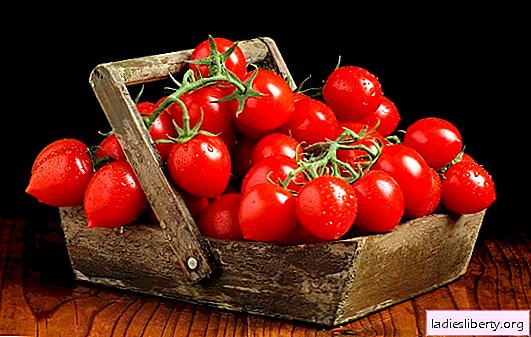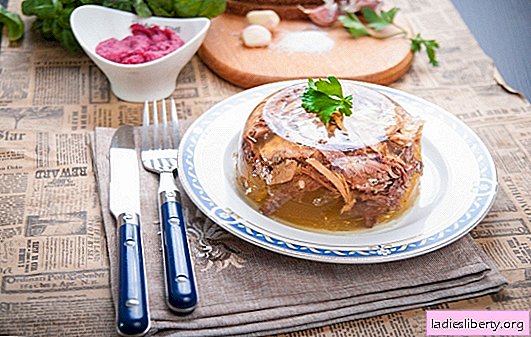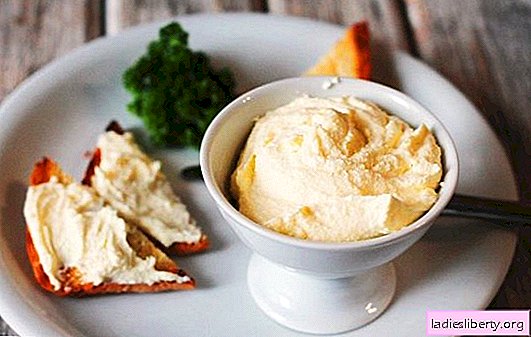
Honeysuckle - general description
Honeysuckle - deciduous or evergreen branching-climbing shrub of the family honeysuckle with characteristic large enough flowers collected in capitate inflorescences, and simple whole, sometimes lobed leaves. Flower cup - asymmetric with respect to the center, five-jagged, has a white, blue, yellow or pinkish color; corolla - tubular, funnel-shaped.
Honeysuckle is produced very early in the very beginning of summer. Juicy berry-like fruits, from pale blue to deep blue, are located close to each other, and often grow together in pairs. Round bright orange or red honeysuckle (wolfberry) berries are not edible.
Honeysuckle - types and places of growth
In nature, there are about 180 varieties of honeysuckle, of which only a few varieties are edible. Edible shrubs can be recognized by blue, barrel-shaped berries. A plant with delicate flowers and fruits is unpretentious and frost-resistant. It grows unevenly, the predominant part of the species is concentrated in Asia. Apparently, this corner of the world is the birthplace of the plant.
In general, representatives of this genus grow in the Northern Hemisphere, flooding territories with a temperate climate. Wildlife found in North America and Eurasia. Many species of honeysuckle live in forests of various compositions, shrubbery, on the outskirts of marshes, mountain slopes, as well as in some tropical zones of southeast Asia.
Honeysuckle (wolfberry) is widespread. On the territory of Russia you can meet only 3 varieties of edible honeysuckle: Altai, Kamchatka and Caucasian. Their main areas were Eastern Siberia and the Far East.
Honeysuckle - healing properties
The main advantage of edible honeysuckle is its sweet and sour berries, which have concentrated a storehouse of useful substances and vitamins. They play a huge role in maintaining the cardiovascular apparatus, treating hypertension, vascular diseases, and anemia. Fresh fruits of the plant are used as a tonic and restorative, as well as to improve the activity of the digestive system. Berries are also recommended for frequent nosebleeds. And juice from fresh berries helps get rid of skin diseases.
Other parts of the honeysuckle (flowers, leaves) are used to eliminate edema, diarrhea. They have a diuretic, disinfectant and anti-inflammatory effect, so fresh decoctions are widely used for conjunctivitis (rinsing), inflammation of the upper respiratory tract (rinsing), cystitis and dropsy.
Honeysuckle - dosage forms
To be able to use the natural power of honeysuckle not only in the summer months, but also in winter, henceforth, stock up on the gifts of this miraculous shrub. The bark must be harvested in April, and the leaves - during flowering, drying of raw materials is carried out indoors. Berries can also be dried, frozen or used as the main component for the preparation of canned blanks.
Honeysuckle - traditional medicine recipes
Berry juice for the treatment of eczema, psoriasis, ulcers and lichen: freshly squeezed juice rub into problem areas 3-8 times a day for one to two weeks. The pulp can be applied to poorly healing sores.
With high blood pressure, migraines, gastritis and colitis: 50 gr. fresh or dried fruit pour 400-500 ml of boiling water, insist, well wrapped, two to three hours. It is necessary to use the infusion in 30 minutes. before meals, one hundred milliliters 3 times a day.
Decoction from edema: add a table to a glass of warm or boiling water. spoon of crushed honeysuckle roots, cook, stirring, over low heat for ten minutes. Drink a decoction in two sips before eating. If the amount of water is increased by 2-3 times, a healing broth can be used to rinse the mouth and sore throat.
Leaves with diarrhea and colic: a few (1-2 tablespoons) fresh or dry shredded leaves (it is better to use fresh) pour 200 g. boiling water and insist for three hours, then squeeze and take three times a day, regardless of food intake.
Honeysuckle - contraindications
There are no contraindications to the use of honeysuckle. Too large doses of berries can provoke secondary erythrocytosis, (an increase in red blood cell and hemoglobin in the blood), diathesis in young children and upset stool.
Comments











